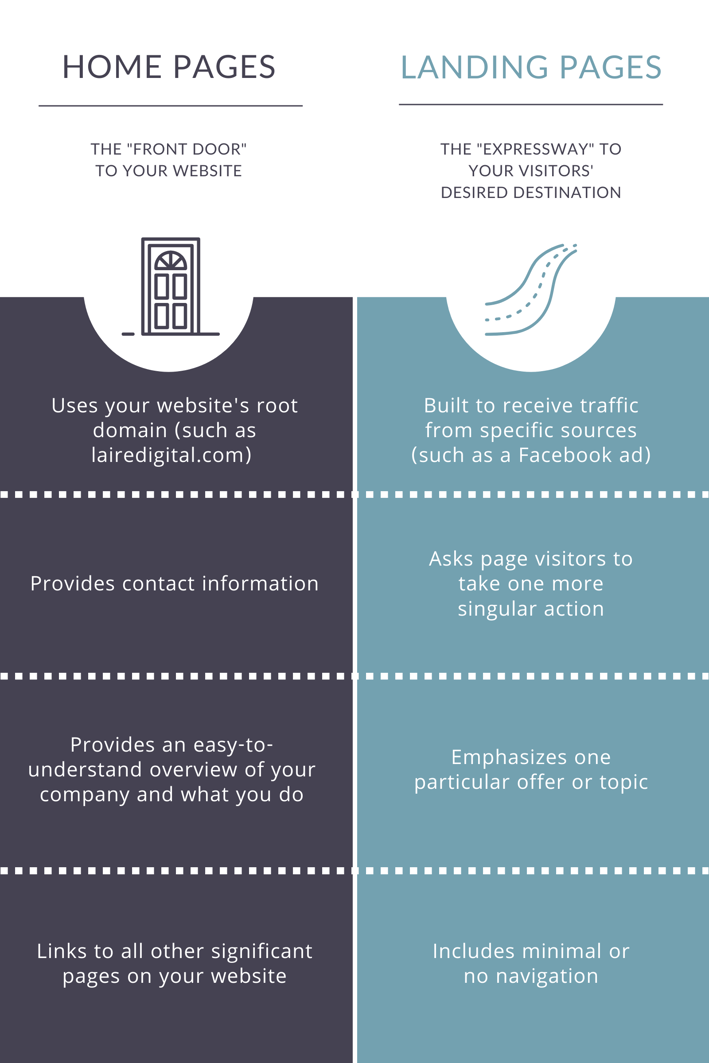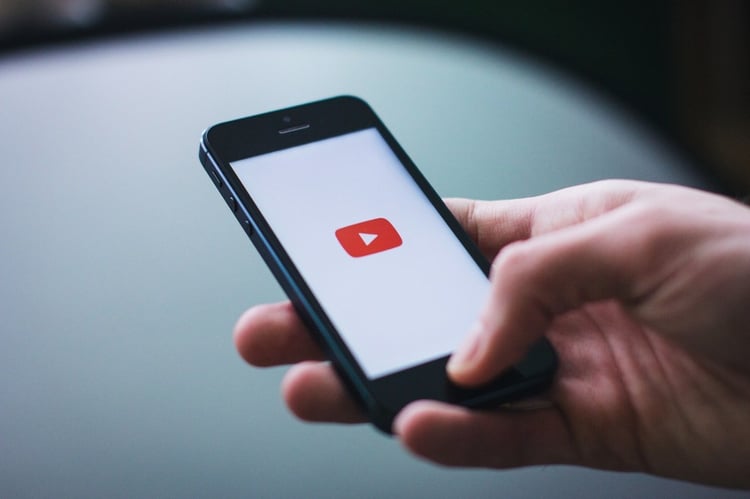Content marketing is the kingpin of any business's marketing strategy for getting inbound leads through its website. With content marketing, you are looking for ways to provide increasingly helpful and compelling information to your prospects with the goal of them giving you their contact information in return.
There are many pieces in this process, but the one piece we want to talk about here is what types of content you are offering for that contact information. Maybe it's a downloadable content offer (think ebook, checklist or template) that you give out in exchange for a prospect's name and email address. Maybe it's a free consultation you've developed in exchange for in-depth information about themselves or their company to help you assess if they are a good fit. Remember, the more information you ask from them, the more valuable your offer needs to be.
Let's look at some of the different types of content companies like yours are using to generate more leads on their website (that don't include those less-than-effortless ebooks).

9 Other Types of Content (That Aren't E-books)
1. Slideshows: Unlike most white papers and some ebooks, this presentation format helps you cut your content into smaller, more easily digestible chunks. Slideshows - or SlideShares using LinkedIn's specialized tool for presentations and infographics - give you more freedom to present your information graphically, rather than in paragraphs of text. This is a great option if you've presented at a seminar, lunch-and-learn or convention and can be a low-effort way to convert attendees and other followers into leads.
You can also repurpose your slides into social media posts, linking back to a landing page on your site where a downloadable version of your slideshow lives. Depending on the topic and how in-depth it is will decide how valuable this type of content offer actually is, but typically, you can ask for more information from your website visitors for this level of content.
2. Infographics: When you have information that can be represented visually, infographics are 🔥amazing! In many instances, your website visitors want you to get to the point. Don't make them work too hard to get the information they need. With an infographic, you’ve not only given your audience what they need but you've done it in a way that combats information overload. Plus - you can share bits and pieces of the infographic on your social media, landing pages and relevant blogs to help promote the full creative. As a content creator, any time you can make a plan to reuse materials, that piece becomes much more valuable to me since it has so many different use cases.
However, keep in mind that most infographics provide a limited amount of information, thus making them not quite as valuable to your potential leads. That being said, consider asking for minimal information for this type of content download (name and email address).
Here's an example of an infographic we did on the difference between a home page and a landing page:

3. Email Series: Have you spent a lot of time creating custom social media graphics with helpful tips, and tidbits that are highly relevant and helpful for your buyer personas? Maybe you have a guide or checklist that you want to repurpose. Whether you have or haven't already created these assets, an email series is a great place to showcase your helpfulness in more manageable chunks, for both you and your leads.
By breaking up your insights into a series instead of one big ebook, you have multiple days worth of content that your prospects have opted-in to get directly to their inbox for 10, maybe 30, days in a row. Pick a theme, say 25 Dental Website Must-Haves or Create a Marketing Plan for Your Construction Company: a Step-by-Step guide and trickle down the information to them, one nugget at a time.
The key here is consistency though. Try to stick to a consistent time for all emails in the series to be sent so recipients know when to expect it. That will help increase open rates and engagement with your email content.
4. Checklists & Cheat Sheets: Showcase your expertise and give your website visitors a little guidance by producing a checklist or a cheat sheet. These types of content should ideally be something your prospects would see and want to print and keep on their desk to reference over and over again. A one-page "how-to" cheat sheet or a "don't-forget-to" checklist can be super helpful to your prospects. Get creative. The more visual the better and don’t forget your logo (in case they share with a friend).
Here's a great example from HubSpot who created a social media image size cheat sheet: see it here.
And another one from Tilghman Builders, a construction company based out of Pennsylvania. They created a pretty nifty kitchen remodel checklist for homeowners to use to plan out their wish list for their upcoming renovation project.
5. Templates: Don't just talk about solving a problem - show it! When you help people help themselves, they remember you for it. Give your prospects the tools they need to solve their problems - or at least get started in solving their problems. This is can be a great way to get new leads, help your existing customers and even empower your sales team. You can even provide an example to go along with the template if it's complex.
Here's a great example from JPA Dental Transitions. They work with dentists looking to sell their dental practice. JPA understands that a problem these dentists will face is how to notify their patients. That's why they created this template: Sample Letter to Patients After a Dental Practice Sale.
Other examples of a template could be a social media calendar template for a marketing firm or consultant, or a resume template for a human resources company.
6. How-To & DIY Videos: There is a reason why people love cooking videos. People remember, like, share and learn through visual content much better than any other format. You don't have to take our word for it. Check out these statistics:
- According to Medium, when people watch videos, 95% of a message is remembered, whereas only 10% when read.
- And according to IdeaRocket, over 70% of marketers claim video produces more conversions than any other type of content.
- IdeaRocket also states that the average consumer watches 206 videos per month. That's a lot of videos!
Before you start creating your videos, get to know your buyer persona’s preferences and pain points and invest in developing a video that walks viewers through a process. For instance, if you work for or own a construction company, your audience would love to learn about DIY home renovation projects, and that type of content would make a great video!

7. Original Data & Research: The least expensive way to curate original data is to run a survey with your subscribers, leads, customers and industry professionals and associates. Get your buyer personas and partners involved in your content creation and they will automatically feel valued, heard and bought-in to your brand. Publish the results in the form of a report, study or infographic. This way you get detailed information about your community, and can offer your findings to get even more leads!
Speaking of which, while we have your attention, we would love to hear from you. Take this quick survey and let us know what type of content you want to learn more about. Content marketing, SEO, social media - we've got tons of information to share.
8. Podcasts: If you don't consider yourself a writer, or really just prefer to sit and talk about a given topic, try podcasts. Podcasts are great because you don't have to be a video editing wiz, or even brush your hair to produce a great piece of content. All you need is the right recording equipment, a topic and you can go to town. The sound of your voice can put personality into your brand and give you the opportunity to make a better connection with your audience. A podcast series can also establish you as a source of expertise when you keep your audience up-to-date on the latest industry trends. Invite guest speakers to join you, like clients, partners or other industry experts to help grow your community and following.
9. Kits: If you've taken the time to create a content strategy and really focused on creating lots of content around a specific topic or a problem your personas are experiencing, bundle all of those content pieces into a cohesive collection. This can really pump up the value of your offer - and can even be offered for a price. Remember you don't have to give everything away for free - as long as it's valuable.
Whether or not you decide to offer your kit for a fee or not, this type of content is definitely worth some extra questions on the contact form since there is a higher level of value.
Here's a great example of a kit from JPA - Seller Transition Prep Tools. In their toolkit, JPA provides a "Ready to Sell" assessment, pre-sale checklist, transition timeline and more.
What's next?
Create types of content that kick butt and put them to work. Post about it on social media, run ads, and don't forget to monitor the success. Ask your audience for feedback and regularly check analytics to see how it is performing on your website. The forms, landing pages and more can be optimized over time with every new download or view. Data is your friend. This is where you confirm your research was correct and justify the time you took to create this awesome content.
Track your offer and the eventual revenue it brings in. Then, do it all over again. Solve a new problem. Make a new prospect happy. Continue to attract more conversions in the process.
If you have any questions about content marketing, generating leads through your website or any other digital marketing component, give us a ring or check out our free website guide below.


